Videos by Sepideh Maziar سپیده مازیار
This video is published in ' Theorizing Resilience and Vulnerability in Ancient Societies' (TRAVA... more This video is published in ' Theorizing Resilience and Vulnerability in Ancient Societies' (TRAVAS). In this blog, the organisores publish the results of the international, multidisciplinary TRAVAS Workshop held online in January 2021, where we discussed concepts on resilience and vulnerability deriving from different disciplines like ecology, psychology, risk management, geography, sociology as well as their applicability and appropriation for different fields of research in Ancient Studies & Archaeology.
For the link see: http://resilience2020.archaeological.science/index.php/resilience-in-the-diaspora-an-archaeological-approach/ 51 views
Books by Sepideh Maziar سپیده مازیار
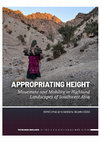
APPROPRIATING HEIGHT: Movement and Mobility in Highland Landscapes of Southwest Asia
The essays in this book focus on archaeological approaches to the utilization of highland regions... more The essays in this book focus on archaeological approaches to the utilization of highland regions in southwestern and central Asia, examining the interplay between human communities and highland landscapes from the Paleolithic era to the present.
Contributions combine case studies with theoretical considerations to explore adaptive strategies of movement. They discuss the significance of mobility within archaeological and anthropological discourse. Contributors engage with critical questions: How can archaeologists discern traces of movement and unravel material footprints of diverse mobility? How can they track shifts in mobility through time or regions? By systematizing observations on human spatial behavior across epochs and settings, these essays seek to test and refine traditional archaeological methodologies. They present nuanced frameworks and shed light on the adaptability and resilience of these communities.
“Appropriating Height” aims to understand the human experience in highland environments. It is essential for those fascinated by the entanglement between people, place, and time, providing a comprehensive perspective on the legacy of human movement.
This book is the second volume of a series published by the German-Iranian research cooperation “The Iranian Highlands: Resiliences and Integration in Premodern Societies”. The goal of the research project is to shine a new light on communities and societies that populated the Iranian highlands and their more or less successful strategies to cope with the many vagaries, the constant changes and risks of their natural and humanly shaped environments.
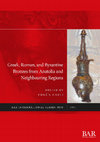
E. Laflı (ed.), Greek, Roman, and Byzantine bronzes from Anatolia and neighbouring regions. BAR International Series 3038. Oxford: BAR Publishing, 2021
This volume focuses on bronze and other metal finds from several ancient sites of Asia Minor and ... more This volume focuses on bronze and other metal finds from several ancient sites of Asia Minor and other regions in the Mediterranean. It consists of four main parts and 45 papers in total which deal with various genres of ancient bronze material. The papers include analysis of pre-Greek, Greek, Roman, and Byzantine bronzes from Anatolia, as well as studies of bronzes from Georgia, Greece, Iran, Italy, Serbia, and Slovenia. Key sites are covered, such as Allianoi, Arycanda and Olba, Roman and Early Byzantine cities in western and southern part of Turkey. The volume also contains a common bibliography for researchers interested in Asia Minor and neighbouring regions. Readers will discover numerous unpublished materials as well as new insights into the bronze archaeology of Anatolia and more broadly across the rest of the ancient eastern Mediterranean.
book chapter by Sepideh Maziar سپیده مازیار

Appropriating Height. Movement and Mobility in Highland Landscapes of Southwest Asia, 2024
Migration as a part of human behaviour has once again been taken on among
archaeologists, anthrop... more Migration as a part of human behaviour has once again been taken on among
archaeologists, anthropologists, and other social scientists. Although the social sciences
offer various narratives of migration, there is an opportunity for archaeology to enrich
its perspective by embracing more contemporary and expansive frameworks, moving
beyond traditional approaches. The interdisciplinary insights, drawing from fields such
as anthropology, sociology, and human geography, not only acknowledge the complexities
inherent in migration but also potentially can provide a more holistic and nuanced
exploration of migration dynamics. Moreover, this research argues that archaeological
interpretation of migration should take human agency into account and envisage the
migration as an action, not a mere reaction. Accordingly, this research seeks to expand
our understanding of migration beyond vulnerability and adaptation, by scrutinizing it
under the social resilience framework.

The End of the Kura-Araxes Phenomenon The Chrono-Cultural Aspect of the EB/MB Transition in the South Caucasus, 2024
By the middle of the third millennium, most of the Kura-Araxes sites along their oikumene in west... more By the middle of the third millennium, most of the Kura-Araxes sites along their oikumene in western Asia had been abandoned. There is no unequivocal understanding of the end scenario: Should we conceptualize it as the collapse and thus the 'end' of the Kura-Araxes cultural tradition, If so, did the tradition collapse into social oblivion or into historical memory we should we think about this 'end'?
Recent excavations have uncovered a range of material deposited at Kura-Araxes sites during the final phase of this tradition. The stories that unfold from these objects differ, and they raise some challenging questions. Based on a review of previous and recent excavation data, this article, which focuses on Iranian sites, examines these scenarios with the aim of gaining a more comprehensive understanding of what we may consider the 'end'. Although the available data failed to paint a comprehensive picture due to the scarcity of excavated sites that include this phase, they do provide a substantial foundation for reconstructing a cultural/social transformation from the early to Middle Bronze Age in the Iranian highlands. As in other areas, they seem to indicate a diverse range of scenarios rather than one 'end' to all of the Kura-Araxes sites.

COMING TO TERMS WITH THE FUTURE Concepts of Resilience for the Study of Early Iranian Societies, 2023
In the archaeology of Western Asia we are more familiar with collapse scenarios, and there are fe... more In the archaeology of Western Asia we are more familiar with collapse scenarios, and there are fewer case studies that seem to show continuity. The Kura-Araxes cultural tradition, despite the different perturbations of living in a highland landscape, survived and demonstrated a degree of resistance through a thousand years of continuity during the fourth millennium BCE. This tradition is explored in this paper using the framework of ‘resilience theory’ and the ‘adaptive cycle.’ I hypothesize that unknown disturbances in the core area led to certain transformations that evolved the society’s coping capability. As part of a cycle of reorganization and renewal, elements of the Kura-Araxes groups reordered and decided to migrate to neighboring areas. Applying diverse strategies made them resilient in the hazardscape of the Iranian highlands.
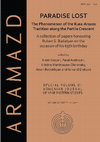
Many scholars concerned with the Kura-Araxes cultural tradition take many aspects of this complex... more Many scholars concerned with the Kura-Araxes cultural tradition take many aspects of this complex phenomenon for granted. In most publications, the expansion of this tradition across a vast area is treated like the movement of people from point A to B, or in the best case, as the waves of movement between these points. In most of them, migration is considered a direct reaction of people to population growth, lack of pasture lands, environmental stresses, and the Kura-Araxes as environmental or conflict refugees that flee a threat.
These perspectives in recent years terminated to some skeptics regarding considering the distribution of the Kura-Araxes material culture as a result of migration. On the other hand, turning to be once again a buzzword, ‘migration’ as an explanation, is considered anachronistic among some archaeologists. This article will reevaluate different scenarios related to the Kura-Araxes phenomenon to see where we stand and how we can overcome these shortcomings. It seems that the Kura-Araxes phenomenon at the current state of our understanding suffers different drawbacks at different levels. The migration scenario itself and the mechanism behind it are still vague, and the relationship between the core area and diaspora is rarely addressed. It is suggested that approaches such as ‘resilience theory’ and discussing the Kura- Araxes phenomenon and migration in the context of social resilience will be more promising for the topic at hand.
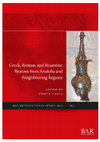
E. Laflı (ed.), Greek, Roman, and Byzantine bronzes from Anatolia and neighbouring regions. BAR International Series 3038. Oxford: BAR Publishing, 2021, 2021
In this paper a copper-based pin found in Köhné Pāsgāh Tepesi excavations has been investigated. ... more In this paper a copper-based pin found in Köhné Pāsgāh Tepesi excavations has been investigated. This archaeological site is located between the villages of Máfrüzlü and Shoja'lu, and is part of the administrative district of Káleybár district, in East Azerbaijan province, Iran. It is located on the south bank of the Araxes valley in the Khodääfarin area. The site is one of several sites that will be submerged by the Khodääfarin dam project.The pin has been thoroughly examined in an attempt to find more about the elements used in the alloys' composition and the manufacturing methods of this object.
The analytical methods used include ICP, SEM-EDX and metallography. According to the analytical data, an arsenic-copper alloy has been used to make this object with arsenic content about 3%. The metallographic studies showed banded microstructure evident chemical segregation, but also implied cold working used effectively to manufacture the pin.
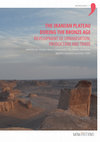
The Iranian Plateau during the Bronze Age. Development of Urbanisation, Production and Trade. 2019, Jan-Waalke Meyer, Emmanuelle Vila, Marjan Mashkour, Michèle Casanova, Régis Vallet (Eds).. Coll. Archéologie(s), 1, MOM Éditions. Lyon., 2019
In the middle of the fourth and the beginning of the third millennium BC, the southern part of Ca... more In the middle of the fourth and the beginning of the third millennium BC, the southern part of Caucasus, eastern Anatolia, and northwestern Iran experienced a different cultural development characterized by special material culture identified as the Kura-Araxes cultural tradition. In this epoch of cultural prehistory, Iran has previously been considered as a peripheral area in comparison with its counterparts of the Mesopotamian heartland to the south, or even northern Mesopotamia. This concept either actuates fewer investigations in this area or studies with the focal point from lowland and its domination. The current chronological framework is also based on past archaeological data from more than four decades ago and surprisingly, since then, nothing has been added to evolve or develop our understanding of this period in Middle Eastern/Iranian history.
In this article, reviewing the past studies, I address partly these shortcomings. Furthermore, investigating the new fresh data from the southern part of the Araxes Valley and comparing them with neighbor areas, I have tried to promote a better understanding of cultural dynamics and societal complexity of this timespan in this area.
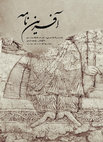
Afarin Nameh; Essays on the Archaeology of Iran in Honour of Mehdi Rahbar, 2019
در طول دهههای اخیر، اطلاعات و دانش ما از نظام مدیریت ساسانیان در شکلدهی و تغییر چشمانداز فرهنگ... more در طول دهههای اخیر، اطلاعات و دانش ما از نظام مدیریت ساسانیان در شکلدهی و تغییر چشمانداز فرهنگی و باستانشناختی و حوزه استقراری خود (با ایجاد روستاها و شهرها، ساختارهایی با کارکردهای متفاوت، شبکهها و تأسیسات آبیاری)، ایجاد زیرساختها، الگوهای استقراری و روابط درون و برون منطقهای در مناطق مختلف ایران، از دشت گرگان گرفته تا شمال غرب ایران ارتقا چشمگیری یافته است. باوجوداین، اطلاعات اندکی از نظامها و الگوهای سیاسی و اجتماعی پیشینیان این امپراطوری، یعنی اشکانیان، از حوزه جغرافیایی ایران در دسترس است. یکی از این مناطق کمتر شناختهشده، شمال غرب ایران است. شواهد باستانشناختی بهدستآمده از دوره اشکانیان در این منطقه بسیار اندک است و این مسئله منجر به کمبود اطلاعاتی عظیمی از این دوره شده است. بیشتر اطلاعات موجود نیز محدود بهکاوش گورستانهای متعلق به این دوره است. پروژه بررسی باستانشناختی دره ارس، همراه با کاوشهای محوطه کهنه پاسگاه، کهنهتپهسی، و نادرتپهسی که در حوضه این رود قرار دارند، فرصتی برای شناسایی دقیقتر نظام استقراری این دوره و الگوی ساختارهای ایجادشده فراهم کرده است. در این مقاله کوشیده شده تا با استفاده از دادههای حاصل از این بررسی و نتایج کاوش محوطههای نامبرده، بهبازسازی مقدماتی نظام مدیریتی و سیاسی دوره اشکانی در مجاورت سرحدات سیاسی و جغرافیایی آن در حوضه جنوبی رود ارس بپردازیم. نتایج اولیه این بررسی نشان میدهد این حوضه در دوره اشکانی بهصورت نسبتاً متراکمی در حاشیه رودخانههای فرعی مسکونی بوده است و در راستای مدیریت سیاسی و نظامی کوشش شده تا با ایجاد ساختارهای دفاعی مشابه پادگانهای نظامی-حفاظتی یا هنگهای مرزی امروزی، به تعداد بسیار زیاد، کنترل سیاسی و نظامی این منطقه در دست گرفته شود. چنین ساختاری نشان از تغییرات مهم سیاسی، نظامی و موقعیت خاص جغرافیایی-سیاسی دره ارس در دوره اشکانی دارد.
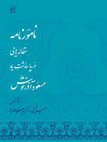
" The Description of Mud-Bricks Used in the Architectural Structures of Tepe Hegmataneh", "
D... more " The Description of Mud-Bricks Used in the Architectural Structures of Tepe Hegmataneh", "
During the third season of excavaƟon by M. Azarnoush in Hegmataneh, the mud- brick
remains with different sizes, textures and colors in a straƟgraphical trench made preliminary
survey necessary to find the sequence and funcƟon of these various mud bricks in
Hegmataneh structures. To locaƟng and register we used GPS and named each posiƟon
with one code starƟng with HEG and a number aŌer it. 26 codes were registered, six of
them related to excavated areas in the third season of excavaƟon and the others to past
excavated areas or surface structures.
Based on formaƟon process of architectural structures, Five different types with different
sequence have been introduced; these categories are not only based on our survey
but also on excavated areas in which those types have been recognized. Based on
survey, it seems that mud brick buildings with 32-35×10-13 cm are the earliest phase in
the excavated area, situated beneath the building complexes and forƟficaƟon wall which
have been excavated by M. R. Sarraf. In some areas these are situated under a thick layer
of sediment which is a gap (just in this area) between this phase and building complexes
phase. Mud- bricks of this phase not only are not comparable with famous Median sites
in Iran such as Godin Tepe or Nushijan, but also poƩery which has been found with them
provides a date of the Parthian period."

Eighty years of Iranian Archaeology ", edited by Yousef Hasanzadeh and Sima Miri.Iranian National Museum,Iranian center for Archaeological research, and Parineh. (In Persian with English abstract)., 2012
" Did the development and expansion of cities go substantially against the cultural heritage of e... more " Did the development and expansion of cities go substantially against the cultural heritage of each society and did cities have to demolish their cultural heritage in order to develop welfare and modern social life? or is it us, who are unable to protect our cultural heritage from urban development? Nowadays the traditional archaeological methods are not enough to preserve the cultural heritage of cities. This issue became an important conflict, for many large cities of the world, between protecting the past identity and heritage and the need to be modernized for the future. However, searching and reviewing different aspects to achieve an appropriate solution for this issue is vital.
“Urban Archaeology” is one the methods that was successful used to resolve this problem. Nowadays the “urban archaeology” provides a way to protect a historical buildings and monuments for the future generation based on an honorific past, therefore these monuments give meaning and identity to the city.
In the current research, the authors firstly introduce the significances of the urban archaeology and its characteristics in Iran. Achievements and capabilities of this field and its contribution to the urban studies and the future of urban archaeology in Iran will be discussed.
Despite of crucial need to the possibilities and potential of urban archaeology in Iran, unfortunately, until now nobody has paid attention to it. Therefore, describing and proposing this kind of archaeology is extremely important.
This paper tries to answer these questions that why Iranian archaeologists ignore the role of city in archaeological researches and why they left this issue to the sociologists, economists, architects and urban planners and civil engineers.
"
پیشنویس اولیه این مقاله، البته مفصل و جامع تر، برای "پروژه باستان شناسی شهری قزوین" که فاز اول آن توسط نگارندگان به انجام رسید، تدوین شده بود و این مقاله چکیده ای از نتایج مطالعات انجام گرفته برای این پروژه است. از این روی بسیاری از ارجاعات و نقل قول ها به عمد برای راحت تر شدن خوانش متن توسط غیرمتخصصان حذف شده است، چرا که شالوده اصلی این نوشتار، ماحصل ترجمه و جمع بندی انتشارات و یا سایت های اینترنتی موجود در باب این موضوع است تا بتوان به پشتوانه تجربه های صورت گرفته در دنیا تعریف بهتر و مشخص تری برای این موضوع در ایران ارائه داد. البته تمام منابع استفاده یا ترجمه شده در بخش کتابنامه ذکر شده اند و تنها در متن حذف شده است.
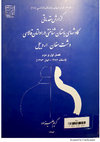
"اولتان قالاسي: نگاهي به متون كهن و منابع جغرافياي تاريخي"، فصل چهارم از كتاب گزارش مقدماتي كاوشهاي باستان شناختي در اولتان قالاسي.دشت مغان-اردبيل، كريم عليزاده., 2007
Ultan Qalasi is the largest of many fortified sites of Mughan steppe in Northwestern Iran. It is ... more Ultan Qalasi is the largest of many fortified sites of Mughan steppe in Northwestern Iran. It is located on the south bank of Aras River, between Parsabad and Aslandouz towns, Ardabil province. It covers more than 70 hectars.
In this article, we pay attention to historical geography of this town and try to found any traces of this city in the old historical and geographical written sources.
Based on our results, it seems that after the Sassanian period, these areas were occasionally caught up between Khazars and Arabs. The Mughan Steppe and different areas of Caucasus and Transcaucasia during late Sassanian period were colonized by Iranians. Islamic historians of the tenth century describe the town (now known as Varthan) as a bustling economic center with a large mosque outside the city walls.
By the time of the Mongol invasions but probably Ultan Qalasi was abandoned. The plain became a favored pastureland, first by various Kurdish and Ghuzz Turk groups, then later as winter pasture for the armies of Mongols. By the early eighteenth century, the descendants of these groups had coalesced into the Shahsevan confederacy, whose winter campsites were abundantly scattered over the uplands and the plain in the late 1960's.
Papers by Sepideh Maziar سپیده مازیار
This volume focuses on bronze and other metal finds from several ancient sites of Asia Minor and ... more This volume focuses on bronze and other metal finds from several ancient sites of Asia Minor and other regions in the Mediterranean. It consists of four main parts and 45 papers in total which deal with various genres of ancient bronze material. The papers include analysis of pre-Greek, Greek, Roman, and Byzantine bronzes from Anatolia, as well as studies of bronzes from Georgia, Greece, Iran, Italy, Serbia, and Slovenia. Key sites are covered, such as Allianoi, Arycanda and Olba, Roman and Early Byzantine cities in western and southern part of Turkey. The volume also contains a common bibliography for researchers interested in Asia Minor and neighbouring regions. Readers will discover numerous unpublished materials as well as new insights into the bronze archaeology of Anatolia and more broadly across the rest of the ancient eastern Mediterranean.
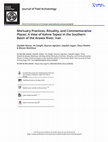
Journal of field archaeology, 2024
Ritual practices as behavior, and the cognitive acknowledgment of life and death, foster a depth ... more Ritual practices as behavior, and the cognitive acknowledgment of life and death, foster a depth in social identity, collective social memory, and a societal worldview. This paper outlines the evidence of Early Bronze Age burial practices in northwestern Iran to discuss the newly discovered chamber tombs at Kohne Tepesi within the broader context of mortuary practices during the middle and last part of the 3rd millennium B.C. The findings from Kohne Tepesi support the idea that, at least for parts of Kura-Araxes society, burial rites and commemoration of the dead played a crucial role in their worldview. Furthermore, this site demonstrates that the changes in symbolic practices and social behavior during the Early Kurgan period were not spontaneous but rooted in the last phases of the Kura-Araxes period and that the perceptions of earlier traditions had been conserved in long-term social memory.
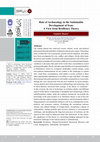
The Iranian plateau has witnessed various cultural, social, and political phenomena from the preh... more The Iranian plateau has witnessed various cultural, social, and political phenomena from the prehistoric millennia to the present century. Sometimes some of them have led to prosperity, growth, and development, and others have been accompanied by war, conflict, and collapse. On the other hand, the diverse and variable ecosystem of the Iranian plateau as one of the semiarid regions in Southwest Asia leads to different environmental and climatic conditions. Like many other parts of the world, these circumstances caused prolonged droughts, floods, and other unpredictable environmental disasters or disturbances. However, ecological catastrophes, climate change, social and political transformations do not confine to this landscape or current time. Amid these circumstances, what makes a society resilient to these often unpredictable disturbances is its ability to cope with them. I do argue that learning from past experiences will enable communities to consciously manage the crisis and prevent trial and error methods. In recent decades, various theories have been proposed in anthropology and archeology. One of these theories, borrowed from ecology, is the theory of "resilience". In this research, the role of archeology in resilience studies and different aspects of this theory is expounded. It designates how archaeology, with its multidisciplinary nature, under the resilience framework can transfer the knowledge of the past societies to us. Resilience theory is one of the rare frameworks that explore change, transformation, and development within a long-perspective environmental setting as well as its contemporary social, political, and economic contexts. Evaluating the correlations between climatic and cultural changes in Longue-durée, recognizing a degree of sustainability, finding probable past societies solutions to environmental challenges, and deciphering the long-term processes of resilience are the objectives that could be addressed under this framework. In this article, the significance of this theory as a promising bridging approach for the hazardous landscape of the Iranian plateau is demonstrated.
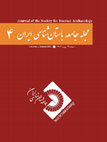
Journal of society for Iranian Archaeology, 2023
With increasing awareness of climate change, war and conflicts, social inequalities, and environm... more With increasing awareness of climate change, war and conflicts, social inequalities, and environmental crises, there has been a growing interest in concepts such as sustainable development and resilience. This shift has also found its place in various scientific disciplines, including archaeology. The ability of societies to withstand these unpredictable changes lies in their knowledge of effective strateies to navigate such conditions. This knowledge and experience can empower us to consciously manage resources, effectively address crises, and adapt to the ever-changing circumstances of the modern world. These approaches are still relatively new and not as widely recognized as they should be. Consequently, this article aims to introduce the resilience approach and explore its application in archaeology. It delves into the background of the term, provides a general definition, and presents various interdisciplinary approaches associated with this framework. Given the current conditions in Iran, embracing these interdisciplinary and multidimensional approaches can transform archaeology to resonate with society. Moreover, it establishes a vital connection between the past and the present of Iran.
Journal of Iran National Museum, 2023
During the excavation in 1962 in Yanik Tepe in eastern Azerbaijan, Iran, a small bone object from... more During the excavation in 1962 in Yanik Tepe in eastern Azerbaijan, Iran, a small bone object from the Neolithic deposits was found. In his brief report, Charles Burney identified this object as a pendant. The similarity of this object with today's glasses has caused some misinterpretation about the function of this object in recent years. In this article, with a detailed microscopic study of this object from an interdisciplinary perspective (archaeology and paleozoology) and comparing it with other known examples in other parts of the world, a more detailed examination of this object is carried out. Furthermore, we proposed possible functions of this object based on our comparisons and the characteristics of the object itself. The results of this research demonstrate that this bone object probably had a decorative function.
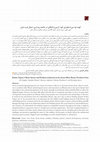
Journal of Iran National Museum, 2022
From an archaeological perspective, the Araxes river basin is still one of the lesser known areas... more From an archaeological perspective, the Araxes river basin is still one of the lesser known areas, either its north- ern or southern sides. Recent archaeological surveys and excavations at different sites in the recent decade shed more light on the cultural development of the basin, especially in the Khoda Afarin and Jolfa Plain as well as the Mughan Steppe. However, the basin still suffers from the lack of systematic excavation or survey in many parts. Among these recent projects, the Khoda Afarin rescue project was a focal point in the archaeology of this area. It retrieved new information from the Chalcolithic, Bronze Age, Iron Age as well as Parthian periods. Kohne Tepesi, one of the excavated sites, is an important site that yielded crucial findings from the Early Bronze Age and Parthian period. A cemetery from the Late Islamic period, which consists of graves without artifacts, partially damaged the large-scale stone architecture dated to the Parthian period. The exact function of this fortified struc- ture remains to be determined. Nevertheless, based on comparable structures throughout the basin, it might be interpreted either as a garrison or part of a feudal socio-economic organization. The main occupational phase of the site is related to the Kura-Araxes culture with six meters of deposits and two chamber graves that raises new challenges and questions regarding the nature of this tradition. In this paper, we briefly discuss the architectural structures, graves, pottery, chipped stone assemblages, as well as faunal remains of each period.
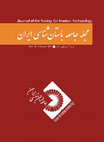
Journal of the society for Iranian Archaeology (JOSIA), 2021
مبحـث توسـعۀ شـهری و حفاظـت بافتهـای تاریخـی کـه در سـدۀ اخیـر یکـی از موضوعـات مهـم در محافـل
عل... more مبحـث توسـعۀ شـهری و حفاظـت بافتهـای تاریخـی کـه در سـدۀ اخیـر یکـی از موضوعـات مهـم در محافـل
علمـی انسانشناسـی شـهری، معمـاری، شهرسـازی و جامعهشناسـی سراسـر جهـان بـوده اسـت، همچنـان یکـی از چالـش برانگیزتریـن مسـائل روز دنیـا و کشـور مـا -ایـران- بـه شـمار میآیـد. تضـاد و تقابـل ظاهـری میـان توسـعه و حفاظـت، بسـتر و محیطـی پـر تلاطـم و گاهـی پرتنـش میـان متخصصـان امـور شـهری، مسـئولین، مـردم و حافظـان بافتهـای تاریخـی بـه وجـود آورده اسـت. رشـد، توسـعه و دگرگونـی جـزء لاینفـک حیـات مدنـی انسـان و شهرهاسـت. تمامــی زیســتگاههای اجتماعــی انســانی، از دیربــاز، همــواره در مســیر تغییــر و تحــولات بودهانــد و بنــا بــه شــرایط سیاســی، اقتصــادی، اجتماعــی و فرهنگــی جامعــه دگرگــون شــدهاند. امــا از ســوی دیگــر، بافتهــای تاریخــی هــر شـهر در مقیـاس خـرد، شناسـنامه و هویـت فرهنگـی آن شـهر محسـوب میشـود و در مقیـاس کلان بخشـی از هویـت تاریخـی و فرهنگـی ایـران اسـت کـه از بیـن بـردن آن برابـر بـا پاککـردن حافظـۀ تاریخـی و انقطـاع قرنهـا تعامـل فرهنگـی، اجتماعـی و تاریخـی در نسـلهای مختلـف آن اسـت. از میـان راههـای مختلـ ِف تجربـه و پیشـنهاد شـده در دنیـا، جهـت پیشـبرد توسـعۀ شـهرها همـراه بـا حفـظ بافتهـای تاریخـی، مبحـث ‘باستانشناسـی شـهری’ رهیافتـی راهگشاسـت کـه در عمـل، آزمـوده شـده و نشـان داده کـه همزیسـتی میـان بافـت تاریخـی و بافـت نویـن شـهری ممکـن اسـت و میتـوان بـا مدیریـت و برنامهریـزی بـرای ایـن تقابـل ظاهـری میـان سـنت و مدرنیتـه در بافـت شـهری چـارهای اندیشـید. در ایـن پژوهـش سـعی شـده بـا نگاهـی بـه ‘باستانشناسـی شـهری’، بـه بررسـی چگونگـی تعریـف و ظهـور ایـن مقولـه در ایـران بپردازیـم، تـا نشـان دهیـم ‘باستانشناسـی شـهری’ نـه تنهـا در حفـظ میراثفرهنگـی شـهری مـا میتوانـد کمـک رسـان باشـد، بلکـه میتوانـد در بالابـردن درک مـا از پدیدههـای شـهری و همزیسـتی
انسـان و شـهر هـم کمـک شـایانی نمایـد.
Urban development and the preservation of cultural heritage has been an important issue across disciplines such as urban anthropology, architecture history, sociology, and city and spatial planning around the world in the past century. It also remains one of the most challenging issues in Iran. While development and modernization are an inevitable aspect of modern life, creating a contradiction between urban cultural heritage and the necessity of being modernized triggers tense environment among urban experts, developers, authorities, city dwellers, and ur- ban archaeologists. Over time human settlements, particularly urban centers have always been transformed, evolved, and changed in response to political, environmental, economic, or social conditions. However, the historical and cultural heritage of each city contribute to the formation of cultural identity that fosters historical awareness. Demolishing urban cultural heritage leads to eliminating collective historical memory by breaking from the centuries of generational the cultural continuity. ’Urban Archaeology‘ has shown effectiveness in addressing the contradiction and is widely acknowledged as an effective approach. In this article we explain the significance and definition of urban archaeology, its development in Iran, and its practices in vibrant, metropolitan cities of Iran.









Uploads
Videos by Sepideh Maziar سپیده مازیار
For the link see: http://resilience2020.archaeological.science/index.php/resilience-in-the-diaspora-an-archaeological-approach/
Books by Sepideh Maziar سپیده مازیار
Contributions combine case studies with theoretical considerations to explore adaptive strategies of movement. They discuss the significance of mobility within archaeological and anthropological discourse. Contributors engage with critical questions: How can archaeologists discern traces of movement and unravel material footprints of diverse mobility? How can they track shifts in mobility through time or regions? By systematizing observations on human spatial behavior across epochs and settings, these essays seek to test and refine traditional archaeological methodologies. They present nuanced frameworks and shed light on the adaptability and resilience of these communities.
“Appropriating Height” aims to understand the human experience in highland environments. It is essential for those fascinated by the entanglement between people, place, and time, providing a comprehensive perspective on the legacy of human movement.
This book is the second volume of a series published by the German-Iranian research cooperation “The Iranian Highlands: Resiliences and Integration in Premodern Societies”. The goal of the research project is to shine a new light on communities and societies that populated the Iranian highlands and their more or less successful strategies to cope with the many vagaries, the constant changes and risks of their natural and humanly shaped environments.
book chapter by Sepideh Maziar سپیده مازیار
archaeologists, anthropologists, and other social scientists. Although the social sciences
offer various narratives of migration, there is an opportunity for archaeology to enrich
its perspective by embracing more contemporary and expansive frameworks, moving
beyond traditional approaches. The interdisciplinary insights, drawing from fields such
as anthropology, sociology, and human geography, not only acknowledge the complexities
inherent in migration but also potentially can provide a more holistic and nuanced
exploration of migration dynamics. Moreover, this research argues that archaeological
interpretation of migration should take human agency into account and envisage the
migration as an action, not a mere reaction. Accordingly, this research seeks to expand
our understanding of migration beyond vulnerability and adaptation, by scrutinizing it
under the social resilience framework.
Recent excavations have uncovered a range of material deposited at Kura-Araxes sites during the final phase of this tradition. The stories that unfold from these objects differ, and they raise some challenging questions. Based on a review of previous and recent excavation data, this article, which focuses on Iranian sites, examines these scenarios with the aim of gaining a more comprehensive understanding of what we may consider the 'end'. Although the available data failed to paint a comprehensive picture due to the scarcity of excavated sites that include this phase, they do provide a substantial foundation for reconstructing a cultural/social transformation from the early to Middle Bronze Age in the Iranian highlands. As in other areas, they seem to indicate a diverse range of scenarios rather than one 'end' to all of the Kura-Araxes sites.
These perspectives in recent years terminated to some skeptics regarding considering the distribution of the Kura-Araxes material culture as a result of migration. On the other hand, turning to be once again a buzzword, ‘migration’ as an explanation, is considered anachronistic among some archaeologists. This article will reevaluate different scenarios related to the Kura-Araxes phenomenon to see where we stand and how we can overcome these shortcomings. It seems that the Kura-Araxes phenomenon at the current state of our understanding suffers different drawbacks at different levels. The migration scenario itself and the mechanism behind it are still vague, and the relationship between the core area and diaspora is rarely addressed. It is suggested that approaches such as ‘resilience theory’ and discussing the Kura- Araxes phenomenon and migration in the context of social resilience will be more promising for the topic at hand.
The analytical methods used include ICP, SEM-EDX and metallography. According to the analytical data, an arsenic-copper alloy has been used to make this object with arsenic content about 3%. The metallographic studies showed banded microstructure evident chemical segregation, but also implied cold working used effectively to manufacture the pin.
In this article, reviewing the past studies, I address partly these shortcomings. Furthermore, investigating the new fresh data from the southern part of the Araxes Valley and comparing them with neighbor areas, I have tried to promote a better understanding of cultural dynamics and societal complexity of this timespan in this area.
During the third season of excavaƟon by M. Azarnoush in Hegmataneh, the mud- brick
remains with different sizes, textures and colors in a straƟgraphical trench made preliminary
survey necessary to find the sequence and funcƟon of these various mud bricks in
Hegmataneh structures. To locaƟng and register we used GPS and named each posiƟon
with one code starƟng with HEG and a number aŌer it. 26 codes were registered, six of
them related to excavated areas in the third season of excavaƟon and the others to past
excavated areas or surface structures.
Based on formaƟon process of architectural structures, Five different types with different
sequence have been introduced; these categories are not only based on our survey
but also on excavated areas in which those types have been recognized. Based on
survey, it seems that mud brick buildings with 32-35×10-13 cm are the earliest phase in
the excavated area, situated beneath the building complexes and forƟficaƟon wall which
have been excavated by M. R. Sarraf. In some areas these are situated under a thick layer
of sediment which is a gap (just in this area) between this phase and building complexes
phase. Mud- bricks of this phase not only are not comparable with famous Median sites
in Iran such as Godin Tepe or Nushijan, but also poƩery which has been found with them
provides a date of the Parthian period."
“Urban Archaeology” is one the methods that was successful used to resolve this problem. Nowadays the “urban archaeology” provides a way to protect a historical buildings and monuments for the future generation based on an honorific past, therefore these monuments give meaning and identity to the city.
In the current research, the authors firstly introduce the significances of the urban archaeology and its characteristics in Iran. Achievements and capabilities of this field and its contribution to the urban studies and the future of urban archaeology in Iran will be discussed.
Despite of crucial need to the possibilities and potential of urban archaeology in Iran, unfortunately, until now nobody has paid attention to it. Therefore, describing and proposing this kind of archaeology is extremely important.
This paper tries to answer these questions that why Iranian archaeologists ignore the role of city in archaeological researches and why they left this issue to the sociologists, economists, architects and urban planners and civil engineers.
"
پیشنویس اولیه این مقاله، البته مفصل و جامع تر، برای "پروژه باستان شناسی شهری قزوین" که فاز اول آن توسط نگارندگان به انجام رسید، تدوین شده بود و این مقاله چکیده ای از نتایج مطالعات انجام گرفته برای این پروژه است. از این روی بسیاری از ارجاعات و نقل قول ها به عمد برای راحت تر شدن خوانش متن توسط غیرمتخصصان حذف شده است، چرا که شالوده اصلی این نوشتار، ماحصل ترجمه و جمع بندی انتشارات و یا سایت های اینترنتی موجود در باب این موضوع است تا بتوان به پشتوانه تجربه های صورت گرفته در دنیا تعریف بهتر و مشخص تری برای این موضوع در ایران ارائه داد. البته تمام منابع استفاده یا ترجمه شده در بخش کتابنامه ذکر شده اند و تنها در متن حذف شده است.
In this article, we pay attention to historical geography of this town and try to found any traces of this city in the old historical and geographical written sources.
Based on our results, it seems that after the Sassanian period, these areas were occasionally caught up between Khazars and Arabs. The Mughan Steppe and different areas of Caucasus and Transcaucasia during late Sassanian period were colonized by Iranians. Islamic historians of the tenth century describe the town (now known as Varthan) as a bustling economic center with a large mosque outside the city walls.
By the time of the Mongol invasions but probably Ultan Qalasi was abandoned. The plain became a favored pastureland, first by various Kurdish and Ghuzz Turk groups, then later as winter pasture for the armies of Mongols. By the early eighteenth century, the descendants of these groups had coalesced into the Shahsevan confederacy, whose winter campsites were abundantly scattered over the uplands and the plain in the late 1960's.
Papers by Sepideh Maziar سپیده مازیار
علمـی انسانشناسـی شـهری، معمـاری، شهرسـازی و جامعهشناسـی سراسـر جهـان بـوده اسـت، همچنـان یکـی از چالـش برانگیزتریـن مسـائل روز دنیـا و کشـور مـا -ایـران- بـه شـمار میآیـد. تضـاد و تقابـل ظاهـری میـان توسـعه و حفاظـت، بسـتر و محیطـی پـر تلاطـم و گاهـی پرتنـش میـان متخصصـان امـور شـهری، مسـئولین، مـردم و حافظـان بافتهـای تاریخـی بـه وجـود آورده اسـت. رشـد، توسـعه و دگرگونـی جـزء لاینفـک حیـات مدنـی انسـان و شهرهاسـت. تمامــی زیســتگاههای اجتماعــی انســانی، از دیربــاز، همــواره در مســیر تغییــر و تحــولات بودهانــد و بنــا بــه شــرایط سیاســی، اقتصــادی، اجتماعــی و فرهنگــی جامعــه دگرگــون شــدهاند. امــا از ســوی دیگــر، بافتهــای تاریخــی هــر شـهر در مقیـاس خـرد، شناسـنامه و هویـت فرهنگـی آن شـهر محسـوب میشـود و در مقیـاس کلان بخشـی از هویـت تاریخـی و فرهنگـی ایـران اسـت کـه از بیـن بـردن آن برابـر بـا پاککـردن حافظـۀ تاریخـی و انقطـاع قرنهـا تعامـل فرهنگـی، اجتماعـی و تاریخـی در نسـلهای مختلـف آن اسـت. از میـان راههـای مختلـ ِف تجربـه و پیشـنهاد شـده در دنیـا، جهـت پیشـبرد توسـعۀ شـهرها همـراه بـا حفـظ بافتهـای تاریخـی، مبحـث ‘باستانشناسـی شـهری’ رهیافتـی راهگشاسـت کـه در عمـل، آزمـوده شـده و نشـان داده کـه همزیسـتی میـان بافـت تاریخـی و بافـت نویـن شـهری ممکـن اسـت و میتـوان بـا مدیریـت و برنامهریـزی بـرای ایـن تقابـل ظاهـری میـان سـنت و مدرنیتـه در بافـت شـهری چـارهای اندیشـید. در ایـن پژوهـش سـعی شـده بـا نگاهـی بـه ‘باستانشناسـی شـهری’، بـه بررسـی چگونگـی تعریـف و ظهـور ایـن مقولـه در ایـران بپردازیـم، تـا نشـان دهیـم ‘باستانشناسـی شـهری’ نـه تنهـا در حفـظ میراثفرهنگـی شـهری مـا میتوانـد کمـک رسـان باشـد، بلکـه میتوانـد در بالابـردن درک مـا از پدیدههـای شـهری و همزیسـتی
انسـان و شـهر هـم کمـک شـایانی نمایـد.
Urban development and the preservation of cultural heritage has been an important issue across disciplines such as urban anthropology, architecture history, sociology, and city and spatial planning around the world in the past century. It also remains one of the most challenging issues in Iran. While development and modernization are an inevitable aspect of modern life, creating a contradiction between urban cultural heritage and the necessity of being modernized triggers tense environment among urban experts, developers, authorities, city dwellers, and ur- ban archaeologists. Over time human settlements, particularly urban centers have always been transformed, evolved, and changed in response to political, environmental, economic, or social conditions. However, the historical and cultural heritage of each city contribute to the formation of cultural identity that fosters historical awareness. Demolishing urban cultural heritage leads to eliminating collective historical memory by breaking from the centuries of generational the cultural continuity. ’Urban Archaeology‘ has shown effectiveness in addressing the contradiction and is widely acknowledged as an effective approach. In this article we explain the significance and definition of urban archaeology, its development in Iran, and its practices in vibrant, metropolitan cities of Iran.
For the link see: http://resilience2020.archaeological.science/index.php/resilience-in-the-diaspora-an-archaeological-approach/
Contributions combine case studies with theoretical considerations to explore adaptive strategies of movement. They discuss the significance of mobility within archaeological and anthropological discourse. Contributors engage with critical questions: How can archaeologists discern traces of movement and unravel material footprints of diverse mobility? How can they track shifts in mobility through time or regions? By systematizing observations on human spatial behavior across epochs and settings, these essays seek to test and refine traditional archaeological methodologies. They present nuanced frameworks and shed light on the adaptability and resilience of these communities.
“Appropriating Height” aims to understand the human experience in highland environments. It is essential for those fascinated by the entanglement between people, place, and time, providing a comprehensive perspective on the legacy of human movement.
This book is the second volume of a series published by the German-Iranian research cooperation “The Iranian Highlands: Resiliences and Integration in Premodern Societies”. The goal of the research project is to shine a new light on communities and societies that populated the Iranian highlands and their more or less successful strategies to cope with the many vagaries, the constant changes and risks of their natural and humanly shaped environments.
archaeologists, anthropologists, and other social scientists. Although the social sciences
offer various narratives of migration, there is an opportunity for archaeology to enrich
its perspective by embracing more contemporary and expansive frameworks, moving
beyond traditional approaches. The interdisciplinary insights, drawing from fields such
as anthropology, sociology, and human geography, not only acknowledge the complexities
inherent in migration but also potentially can provide a more holistic and nuanced
exploration of migration dynamics. Moreover, this research argues that archaeological
interpretation of migration should take human agency into account and envisage the
migration as an action, not a mere reaction. Accordingly, this research seeks to expand
our understanding of migration beyond vulnerability and adaptation, by scrutinizing it
under the social resilience framework.
Recent excavations have uncovered a range of material deposited at Kura-Araxes sites during the final phase of this tradition. The stories that unfold from these objects differ, and they raise some challenging questions. Based on a review of previous and recent excavation data, this article, which focuses on Iranian sites, examines these scenarios with the aim of gaining a more comprehensive understanding of what we may consider the 'end'. Although the available data failed to paint a comprehensive picture due to the scarcity of excavated sites that include this phase, they do provide a substantial foundation for reconstructing a cultural/social transformation from the early to Middle Bronze Age in the Iranian highlands. As in other areas, they seem to indicate a diverse range of scenarios rather than one 'end' to all of the Kura-Araxes sites.
These perspectives in recent years terminated to some skeptics regarding considering the distribution of the Kura-Araxes material culture as a result of migration. On the other hand, turning to be once again a buzzword, ‘migration’ as an explanation, is considered anachronistic among some archaeologists. This article will reevaluate different scenarios related to the Kura-Araxes phenomenon to see where we stand and how we can overcome these shortcomings. It seems that the Kura-Araxes phenomenon at the current state of our understanding suffers different drawbacks at different levels. The migration scenario itself and the mechanism behind it are still vague, and the relationship between the core area and diaspora is rarely addressed. It is suggested that approaches such as ‘resilience theory’ and discussing the Kura- Araxes phenomenon and migration in the context of social resilience will be more promising for the topic at hand.
The analytical methods used include ICP, SEM-EDX and metallography. According to the analytical data, an arsenic-copper alloy has been used to make this object with arsenic content about 3%. The metallographic studies showed banded microstructure evident chemical segregation, but also implied cold working used effectively to manufacture the pin.
In this article, reviewing the past studies, I address partly these shortcomings. Furthermore, investigating the new fresh data from the southern part of the Araxes Valley and comparing them with neighbor areas, I have tried to promote a better understanding of cultural dynamics and societal complexity of this timespan in this area.
During the third season of excavaƟon by M. Azarnoush in Hegmataneh, the mud- brick
remains with different sizes, textures and colors in a straƟgraphical trench made preliminary
survey necessary to find the sequence and funcƟon of these various mud bricks in
Hegmataneh structures. To locaƟng and register we used GPS and named each posiƟon
with one code starƟng with HEG and a number aŌer it. 26 codes were registered, six of
them related to excavated areas in the third season of excavaƟon and the others to past
excavated areas or surface structures.
Based on formaƟon process of architectural structures, Five different types with different
sequence have been introduced; these categories are not only based on our survey
but also on excavated areas in which those types have been recognized. Based on
survey, it seems that mud brick buildings with 32-35×10-13 cm are the earliest phase in
the excavated area, situated beneath the building complexes and forƟficaƟon wall which
have been excavated by M. R. Sarraf. In some areas these are situated under a thick layer
of sediment which is a gap (just in this area) between this phase and building complexes
phase. Mud- bricks of this phase not only are not comparable with famous Median sites
in Iran such as Godin Tepe or Nushijan, but also poƩery which has been found with them
provides a date of the Parthian period."
“Urban Archaeology” is one the methods that was successful used to resolve this problem. Nowadays the “urban archaeology” provides a way to protect a historical buildings and monuments for the future generation based on an honorific past, therefore these monuments give meaning and identity to the city.
In the current research, the authors firstly introduce the significances of the urban archaeology and its characteristics in Iran. Achievements and capabilities of this field and its contribution to the urban studies and the future of urban archaeology in Iran will be discussed.
Despite of crucial need to the possibilities and potential of urban archaeology in Iran, unfortunately, until now nobody has paid attention to it. Therefore, describing and proposing this kind of archaeology is extremely important.
This paper tries to answer these questions that why Iranian archaeologists ignore the role of city in archaeological researches and why they left this issue to the sociologists, economists, architects and urban planners and civil engineers.
"
پیشنویس اولیه این مقاله، البته مفصل و جامع تر، برای "پروژه باستان شناسی شهری قزوین" که فاز اول آن توسط نگارندگان به انجام رسید، تدوین شده بود و این مقاله چکیده ای از نتایج مطالعات انجام گرفته برای این پروژه است. از این روی بسیاری از ارجاعات و نقل قول ها به عمد برای راحت تر شدن خوانش متن توسط غیرمتخصصان حذف شده است، چرا که شالوده اصلی این نوشتار، ماحصل ترجمه و جمع بندی انتشارات و یا سایت های اینترنتی موجود در باب این موضوع است تا بتوان به پشتوانه تجربه های صورت گرفته در دنیا تعریف بهتر و مشخص تری برای این موضوع در ایران ارائه داد. البته تمام منابع استفاده یا ترجمه شده در بخش کتابنامه ذکر شده اند و تنها در متن حذف شده است.
In this article, we pay attention to historical geography of this town and try to found any traces of this city in the old historical and geographical written sources.
Based on our results, it seems that after the Sassanian period, these areas were occasionally caught up between Khazars and Arabs. The Mughan Steppe and different areas of Caucasus and Transcaucasia during late Sassanian period were colonized by Iranians. Islamic historians of the tenth century describe the town (now known as Varthan) as a bustling economic center with a large mosque outside the city walls.
By the time of the Mongol invasions but probably Ultan Qalasi was abandoned. The plain became a favored pastureland, first by various Kurdish and Ghuzz Turk groups, then later as winter pasture for the armies of Mongols. By the early eighteenth century, the descendants of these groups had coalesced into the Shahsevan confederacy, whose winter campsites were abundantly scattered over the uplands and the plain in the late 1960's.
علمـی انسانشناسـی شـهری، معمـاری، شهرسـازی و جامعهشناسـی سراسـر جهـان بـوده اسـت، همچنـان یکـی از چالـش برانگیزتریـن مسـائل روز دنیـا و کشـور مـا -ایـران- بـه شـمار میآیـد. تضـاد و تقابـل ظاهـری میـان توسـعه و حفاظـت، بسـتر و محیطـی پـر تلاطـم و گاهـی پرتنـش میـان متخصصـان امـور شـهری، مسـئولین، مـردم و حافظـان بافتهـای تاریخـی بـه وجـود آورده اسـت. رشـد، توسـعه و دگرگونـی جـزء لاینفـک حیـات مدنـی انسـان و شهرهاسـت. تمامــی زیســتگاههای اجتماعــی انســانی، از دیربــاز، همــواره در مســیر تغییــر و تحــولات بودهانــد و بنــا بــه شــرایط سیاســی، اقتصــادی، اجتماعــی و فرهنگــی جامعــه دگرگــون شــدهاند. امــا از ســوی دیگــر، بافتهــای تاریخــی هــر شـهر در مقیـاس خـرد، شناسـنامه و هویـت فرهنگـی آن شـهر محسـوب میشـود و در مقیـاس کلان بخشـی از هویـت تاریخـی و فرهنگـی ایـران اسـت کـه از بیـن بـردن آن برابـر بـا پاککـردن حافظـۀ تاریخـی و انقطـاع قرنهـا تعامـل فرهنگـی، اجتماعـی و تاریخـی در نسـلهای مختلـف آن اسـت. از میـان راههـای مختلـ ِف تجربـه و پیشـنهاد شـده در دنیـا، جهـت پیشـبرد توسـعۀ شـهرها همـراه بـا حفـظ بافتهـای تاریخـی، مبحـث ‘باستانشناسـی شـهری’ رهیافتـی راهگشاسـت کـه در عمـل، آزمـوده شـده و نشـان داده کـه همزیسـتی میـان بافـت تاریخـی و بافـت نویـن شـهری ممکـن اسـت و میتـوان بـا مدیریـت و برنامهریـزی بـرای ایـن تقابـل ظاهـری میـان سـنت و مدرنیتـه در بافـت شـهری چـارهای اندیشـید. در ایـن پژوهـش سـعی شـده بـا نگاهـی بـه ‘باستانشناسـی شـهری’، بـه بررسـی چگونگـی تعریـف و ظهـور ایـن مقولـه در ایـران بپردازیـم، تـا نشـان دهیـم ‘باستانشناسـی شـهری’ نـه تنهـا در حفـظ میراثفرهنگـی شـهری مـا میتوانـد کمـک رسـان باشـد، بلکـه میتوانـد در بالابـردن درک مـا از پدیدههـای شـهری و همزیسـتی
انسـان و شـهر هـم کمـک شـایانی نمایـد.
Urban development and the preservation of cultural heritage has been an important issue across disciplines such as urban anthropology, architecture history, sociology, and city and spatial planning around the world in the past century. It also remains one of the most challenging issues in Iran. While development and modernization are an inevitable aspect of modern life, creating a contradiction between urban cultural heritage and the necessity of being modernized triggers tense environment among urban experts, developers, authorities, city dwellers, and ur- ban archaeologists. Over time human settlements, particularly urban centers have always been transformed, evolved, and changed in response to political, environmental, economic, or social conditions. However, the historical and cultural heritage of each city contribute to the formation of cultural identity that fosters historical awareness. Demolishing urban cultural heritage leads to eliminating collective historical memory by breaking from the centuries of generational the cultural continuity. ’Urban Archaeology‘ has shown effectiveness in addressing the contradiction and is widely acknowledged as an effective approach. In this article we explain the significance and definition of urban archaeology, its development in Iran, and its practices in vibrant, metropolitan cities of Iran.
For the website chaeck:http://resilience2020.archaeological.science/index.php/resilience-in-the-diaspora-an-archaeological-approach/
https://doi.org/10.1080/00934690.2021.1913314
The period from the 6th up to the middle part of the 4th millennium BC represents the Neolithic and Chalcolithic periods in this region. The material culture of both periods shares many common characteristics with contemporary traditions at sites of the southern Caucasus. Later, in the last part of the 4th millennium BC, a cultural tradition that originated in the southern Caucasus, known as the Kura-Araxes cultural tradition, expanded over a vast area, including the southern part of the Araxes river basin. Based on the study of the pottery styles and obsidian flow, the patterns of interconnection between regions, communities, and sources, and commodity flows are examined. The role of the Araxes River and its tributaries in this interplay over the stated time span is the other inquiry of this article. Furthermore, I will investigate whether spatial propinquity had any impact on commodity flows and exchange, and if so, did this impact affected the material culture and technological practices or not.
These wars reached a turning point during the reign of Alp Arsalan when he added the northern areas of the Araxes river and Anatolia to the Seljuq Empire. This paper, describing these findings, tries to address the following questions: How can we interpret the Byzantine gold coins found in northwestern Iran? Were these coins the result of the arrival of the Byzantines in Northwestern Iran? Or because of the Seljuk’s long struggles and conflicts with the Byzantines, it arrived in this region as war-booty?m
Based on the current limited archaeological evidence, it can be hypothesized that Byzantine gold coins in northwestern Iran may designate a war-booty brought from Byzantine dominated areas into the Seljuq political domination areas. However, the verification of this hypothesis requires more archaeological evidence. Hence, this article, describing this new finding, hopes to contribute to this area’s studies in the given period by raising more questions for future scholarships.
in this area, but the first analysis of some recently excavated sites provide very interesting results and show the potential of this key area. This work present a multidisciplinary approach, which constitutes a first picture of interaction between human, animal and plants in Kohneh Pasgah Tepesi during the Late Chalcolithic represented by Sioni and Chaff‑faced traditions
and the Early Bronze Age by Kura‑Araxes cultural tradition. In this regards, the presented material in this article would enhance our understanding of the subsistence economy of these traditions inside Iran, of which rarely is published.
In this paper, the Kura-Araxes cultural tradition is explored in the framework of the “Resilience Theory” from its backloop phase somewhere in K-domain in the homeland and the Alpha and r phase in the diaspora. I hypothesize that the unknown disturbances in the homeland lead to the breakdown of part of the system. As a part of reorganization and renewal, parts of the Kura-Araxes groups reordered and decided to migrate to other neighbor areas. By interrogating the “social organization”, “identity and material culture”, “subsistence economy, and ecological circumstances” the resilience efforts of the Kura-Araxes groups will be scrutinized with emphasis on the workshop’s area “forms of cooperation”. The concept of resilience makes it possible to examine these issues through interdisciplinary methods. Furthermore, the potential of “Resilience Theory” for migration and diaspora studies will be assessed.
برگزارکنندگان: سپیده مازیار و رقیه رحیمی
دانشگاه مازندران و دانشگاه گوته فرانکفورت
virtual workshop on “Movement, Mobility, Migration; A View from Anthropological Archaeology” organised by Sepideh Maziar and Roghayeh Rahimi Sorkhani, hosted by the University of Mazandaran (Iran) and Goethe University of Frankfurt (Germany
in virtual workshop: “Movement, Mobility, Migration; A View from Anthropological Archaeology” hosted by the University of Mazandaran (Iran) and Goethe University of Frankfurt (Germany).
در این بررسی سعی شده است تا با ترکیبی از روشهای بررسی پیمایشی روشمند و استفاده از تصاویر ماهوارهای کرونا و عکسهای هوایی، از یک سو کل منطقه پوشش داده و از میزان خطای بررسی کاسته شود و از سوی دیگر، با مقایسۀ نتایج این روشها، نقاط ضعف و قوت آنها در این منطقه مورد ارزیابی قرار بگیرد. در انتها با توجه به دستاوردهای این پروژه و بازبینی کلی دیگر بررسیهای صورت گرفته در این منطقه، پیشنهاداتی درباب بررسی های باستانشناختی ارائه خواهد شد.
واژگان کلیدی: بررسی پیمایشی روشمند، فرهنگ کورا-ارس، شمال غرب ایران، باستانشناسی پهندشت، تصاویر ماهواره ای.
The general aim of this article is giving, first of all, a general overview of archaeological activities in this decade to investigate its deficiencies and flaws. Monitoring them, I have tried also to propose a potential future plan for this area.
"
در جايي، كتيبه هاي ميخي به بابلي بر جاي مانده اند، در جايي بيش از هزار متن ميخي كه در حدود دورة فرمانروايي كمبوجيه و داريوش سوم تاريخ گذاري شده اند، به دست آمده است (از بابل، بورسيپا [برسيب] وكيش، ديلبات و نيپور، اور و اروك)، اگرچه آنها صرفاً به اعمال مذهبي و آيين محلي محدود شده اند. استفاده از هيروگليف و دموتيك همچنان در مصر ادامه يافت، در مرزهاي غربي آناتولي، متون چند زبانه مبين حيات(زبان هاي)يوناني، لوديه اي، لوكيه اي و كاريه اي تا فروپاشي حكومت هخامنشي است. تعامل با بوميان در چنين شاهنشاهي چند فرهنگي و چند زبانه نيازمند آن بود كه مقامات رسمي و اداري هخامنشي زبان هاي محلي را به كار ببرند. در چنين وضعيتي، نقش مفسران و مترجمان رسمي بسيار مهم مي شود. در اين موقعيت چند زبانگي، آرامي [هيچ گاه] موقعيت يك زبان رسمي را به دست نياورد.آرامي اي كه در نواحي و مرزهاي دور افتاده استفاده مي شده در بردارندة لغزش هاي املايي و دستوري نسبت به آن چيزي بود كه در سرزمين سوريه- ميانرودان استفاده مي شد و اين مسأله به جاي يك (زبان) آرامي استاندارد (آرامىِ معيار يا متعارف) مجموعة متنوعى از اين زبان شاه ايران نامه هايي به تمام را آشكار مي كند. روايتي از استر كه "شاه ایران نامه هایی یه تمام ايالات شاهنشاهي فرستاد و به هر ايالت با نگاره هاي خودش و به هر انساني با زبان خودش" ممكن است يك عرف ادبى باشد، اما اين به حقيقت نزديك تر به نظر مي رسد تا اين پندار كه آرامي اين شاهنشاهى ناهمگن را به هم جوش داده است. آن گونه كه سويگر و وُتر گفته اند " متون تاريخي دربارة زبان شناسي به ندرت عدالت را در مورد پيچيدگي هاي وضعيت زبان شناسي در دوران باستان رعايت مي كنند"
غير حرفه اي نسبت به كاوش، نسبت به كشوري كه در آن هستید، نسبت
به مردم در مقياس بزرگ تر، و نسبت به باستان شناسان تعريف كرد. عضو يك
گروه باستان شناسی كسي كه قابل اعتماد، سخت كوش، و دقيق است، كسي
كه صادقانه و منصفانه همة وظايفي را كه در قبال گروه، مردم و همكارانش بر
عهده اش است انجام مي دهد، اصول اخلاقي مشخصي را رعايت مي كند.